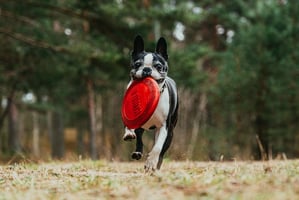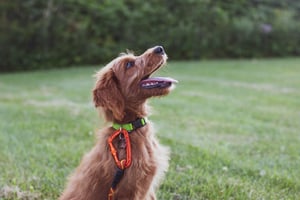German Shepherds are known for their intelligence, loyalty and protective instincts. They are also...
Everything You Need to Know About German Longhaired Pointer Training
German Longhaired Pointers are a popular breed of dog, used for hunting and as family pets. They are intelligent, loyal, and full of energy. Training a German Longhaired Pointer can be a challenging task, but with the right knowledge and approach, you can ensure that your pup will be a happy and well-mannered companion. In this article, we will discuss the best methods of German Longhaired Pointer training, and how to make the process as smooth and successful as possible.
Proper Socialisation
Proper socialisation is an important part of German Longhaired Pointer training. Socialisation helps your pup become accustomed to different people, animals, and environments. It also helps them learn to identify and respond to different situations. To properly socialise your German Longhaired Pointer, start by introducing them to other people and animals. Take them for walks in different places and make sure they are exposed to a variety of different sights, smells, and sounds. If done properly, socialisation can help your pup become a confident, well-adjusted adult.
Crate Training
Crate training is an essential part of German Longhaired Pointer training. It helps your pup learn to be comfortable in their crate and can make house-training much easier. To crate train your pup, start by placing their crate in a quiet, comfortable area. Put their favourite toys and treats in the crate and let them explore it on their own. Once they are comfortable in their crate, you can start leaving them for short periods of time. When you do, make sure to give them plenty of praise and rewards when they are calm and quiet.
Basic Obedience Training
Basic obedience training is an important part of German Longhaired Pointer training. It helps your pup learn how to respond to commands and helps them become better-behaved companions. Start by teaching your pup simple commands like “sit”, “stay”, and “come”. Make sure to reward them with treats and praise when they obey the commands. As they become more comfortable, you can start teaching them more complex commands. With patience and consistency, your pup will soon be a well-trained and obedient companion.
Positive Reinforcement
Positive reinforcement is an important part of German Longhaired Pointer training. It helps your pup learn to associate good behaviour with rewards, which makes them more likely to repeat the behaviour. When training your pup, make sure to reward them with treats and praise when they obey commands or behave well. This will help them learn faster and make the training process much more enjoyable for both of you.
Exercise and Mental Stimulation
Exercise and mental stimulation are essential for German Longhaired Pointer training. These dogs are very active and need plenty of physical and mental exercise to stay healthy and happy. Take them for regular walks and make sure they have plenty of toys and activities to keep them mentally stimulated. This will help them stay fit and healthy and will also reduce the chances of them developing destructive behaviours.
Patience and Consistency
Patience and consistency are key when it comes to German Longhaired Pointer training. Training can be a long and difficult process, but with patience and consistency, you can ensure that your pup learns the proper behaviours. Make sure to be patient and consistent when training your pup, and don’t give up if they don’t learn the commands right away. With time and patience, your pup will soon become a well-behaved and obedient companion.
Conclusion
German Longhaired Pointer training can be a challenging but rewarding process. With proper socialisation, crate training, basic obedience training, positive reinforcement, exercise and mental stimulation, and patience and consistency, you can ensure that your pup will become a happy and well-mannered companion. With the right approach, your pup will soon be a confident, obedient, and well-behaved member of the family.



